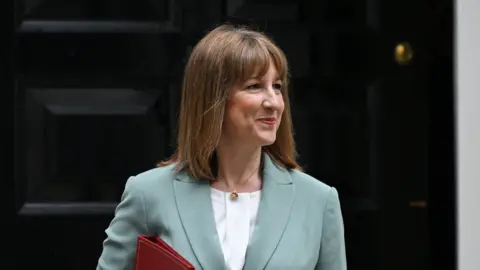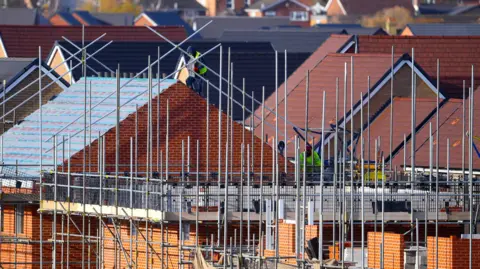Key points at a glance from the Spending Review

 Reuters
Reuters
Chancellor Rachel Reeves has unveiled the contents of the UK’s first multi-year spending review since 2021.
The review sets the day-to-day budgets of government departments over the next three years, used to pay staff and deliver public services.
It also sets their investment budgets until the end of the decade, to pay for new infrastructure such as hospitals, schools, and military kit.
Here is a summary of the key points.
Health
- Day-to-day budget for the NHS in England to go up by 3% in real terms on average over the next three years, reaching £226bn by 2029
- Pledge to deliver £17bn in health service savings over three years by boosting productivity by 2%
Education
- Core schools budget in England to go up by 0.4% in real terms on average over the next three years, reaching £69.5bn by 2029
- Free school meals to be extended to around 500,000 more children whose parents are receiving benefits, costing around £1bn up to 2029
- Extra £615m this year to partially fund a 4% pay rise for teachers in England, with schools expected to fund a quarter of the rise through “improved productivity”
Crime, justice and borders
- Home Office day-to-day budget to go down by 1.7% in real terms over the next three years
- The “spending power” of police forces will go up by an average 2.3% per year in real terms by 2029, assuming local taxes go up too
- Annual funding for the Border Security Command, responsible for tackling small boat crossings, to increase by up to £280m by 2029
- Pledge to end the use of hotels to temporarily house asylum seekers before the next election
- The Ministry of Justice budget, which pays for prison and court costs, to see average real-terms rises in day-to-day spending of 1.8% a year
- £7bn allocated until 2029 to help build 14,000 new prison places in England and Wales by 2031
Defence
- Ministry of Defence day-to-day budget to go up 0.7% in real terms, with investment spending over the period averaging 7.3%
- Defence spending is due to rise from 2.3% to 2.5% of overall economic output by 2027
 Getty Images
Getty Images
Housing and local government
- £39bn allocated for social housing in England between 2026 and 2036, an average of £3.9bn a year over the period compared to £2.3bn currently
 PA Media
PA Media
Transport, energy and environment
- £15.6bn allocated between 2027 and 2031 for transport projects in English city regions outside London
- Additional £11.5bn committed towards the cost of building the Sizewell C nuclear power plant in Suffolk, which will also require private investment
- £3 cap on single bus fares in England extended until March 2027
- Rules used by Treasury officials to assess proposed infrastructure projects to be updated
International affairs
- Foreign Office day-to-day budget to go down by 6.8% in real terms over next three years, largely due to reduced aid spending
- Overseas aid will make up spending 0.3% of national income by 2027, under previously-announced plans





